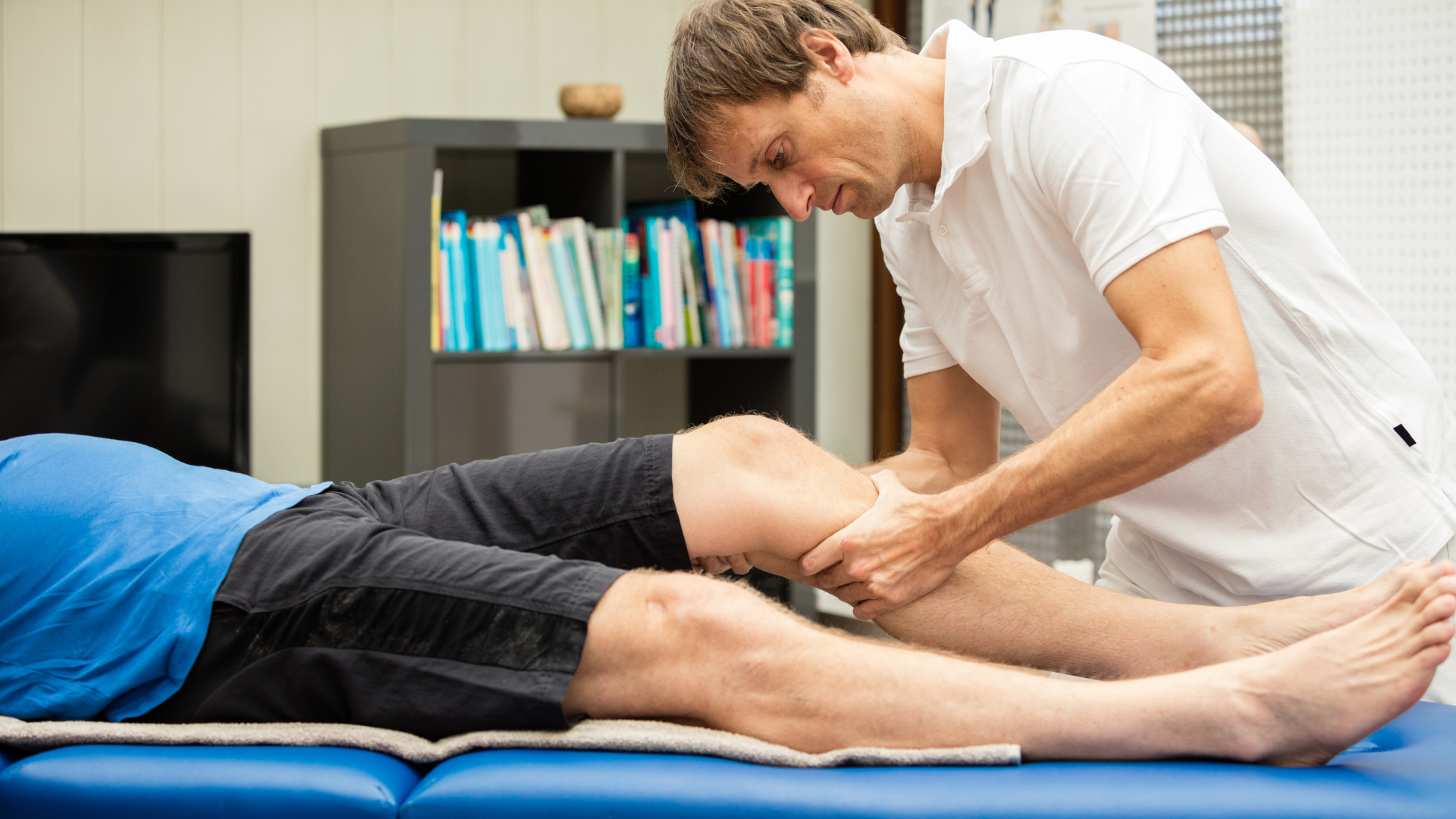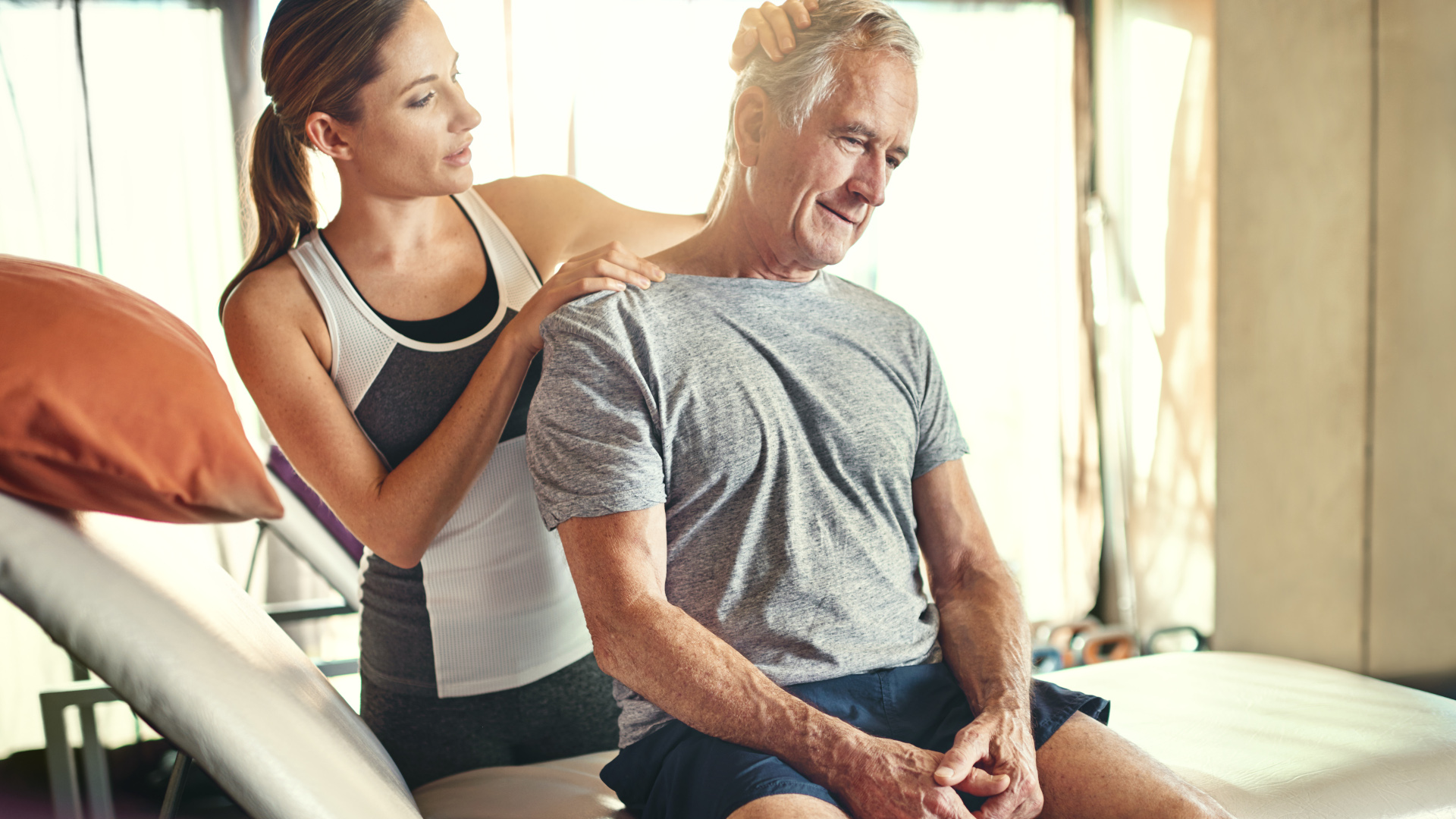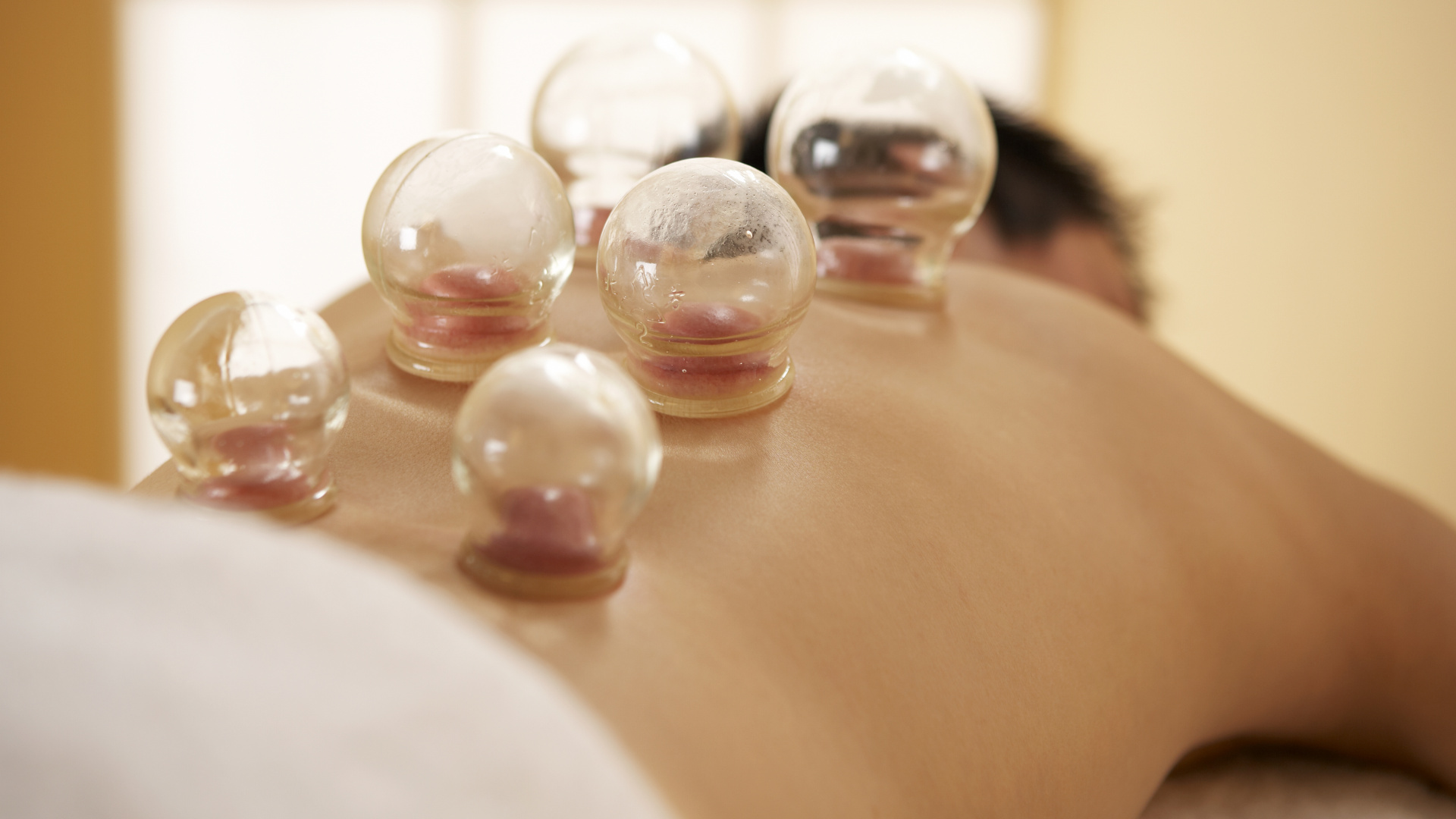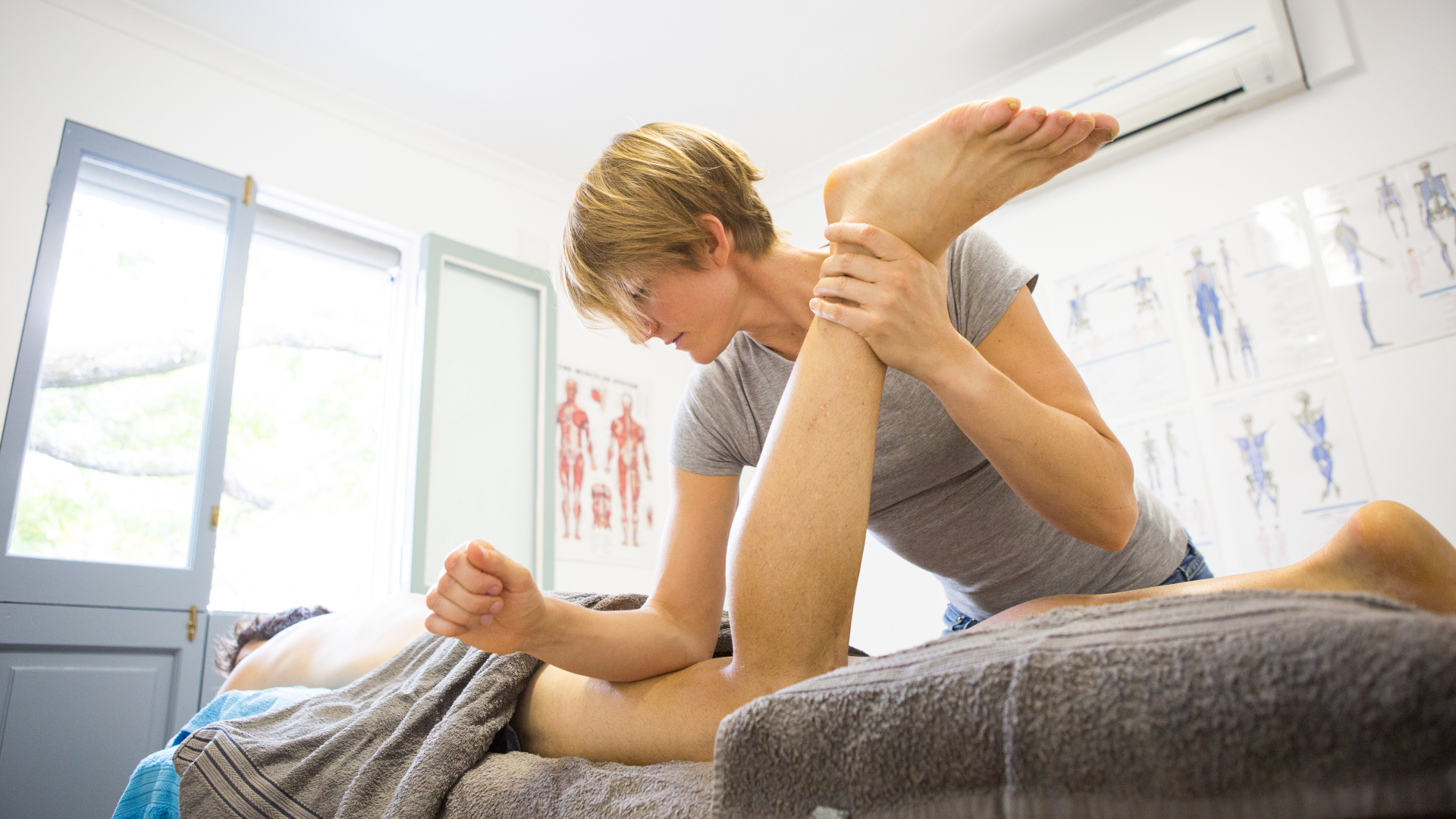What is sports massage? The benefits and techniques of soft tissue manipulation
What is sports massage? We examine the benefits and different techniques that focus on correcting imbalances in your soft tissues caused by athletic performance

Gone are the days when we thought getting faster and stronger simply meant training harder. We now know that proper recovery is essential for increasing our performance, as well as for longevity. Sports massage can be beneficial for anyone engaging in regular physical activity, especially those which emphasize repetitive movement. So what is sports massage, exactly, and why should you try it?
What is sports massage?
Sports massage includes different techniques that focus on manipulating the soft tissues of your body to correct imbalance caused by athletic performance. In addition to your muscles, which you would expect to receive manipulation in an ordinary Swedish massage, sports massage focuses on fascia, which lines and connects all the structures in your body, and even tendons and ligaments.
“Sports massage is enormously beneficial for athletes who are looking to improve their range of motion, increase flexibility, relieve muscle aches caused from recurrent activity, and manage any pain associated with specific sports such as tennis elbow," says Mark Pike of Massage Strong in Lexington, KY.
"While massages for athletes restore muscles and relieve soreness after recent activity, they also help improve future performance and recovery from injury. Repetitive movement that is often required for sports can create imbalances that can cause pain and tension. To avoid use of the painful area, we often overcompensate in another area, which can cause even more tension and pain."

The theory is that when you perform repetitive movements in your training, such as the continual flexion/extension pattern of ankles, knees and hips in running and hiking, you create imbalances in the soft tissues surrounding those joints. After all, there’s only so much impact a pair of the best trail running shoes can offset. Basically, your body adapts to the needs of your sport, but that can sometimes result in imbalance that affects your ability to perform other activities and day to day tasks. This imbalance can look like dysfunction, tension and even pain.
Sports massage focuses on correcting imbalances occurring in the soft tissues so that they operate normally around the functional movement of your joints.
Sports massage is just one branch of a wider discipline called Sports Therapy which also includes techniques such as injury assessment, gait analysis and injury rehabilitation.
Advnture Newsletter
All the latest inspiration, tips and guides to help you plan your next Advnture!
If you’re seeking to include more recovery techniques into your routine, you may want to seek out sports massage in your area, and also check out our yoga sequences intended for runners, hikers and rock climbers.
Sports massage techniques
Though the goal is to get your soft tissues to relax, don’t necessarily expect the soothing, spa-like experience you probably associate with a Swedish massage. Sports massage is likely to be a bit rougher and faster and you’ll keep most of your clothes on.
"Sports massages focus on working the soft tissue with deep strokes and targeting connective tissue and inner muscle layers, which can help correct the problems created from sustained physical activity. Sports massages are often considered deep tissue massage," explains Pike, adding that any post-massage soreness is nothing to worry about.
"Many first timers experience quick relief from their massage, and typically begin to feel some soreness a few hours later. This is common and nothing to be concerned about. The mild soreness from deep tissue massage is a sign of healing muscles that were previously tense before rubbing out the tension."
Sports massage can be performed before athletic performance as a warm up, immediately afterwards for recovery, for injury rehabilitation or as part of your regular training regimen.

When you arrive for your sports massage appointment, you will discuss your needs with your therapist and probably go through a movement analysis before they decide what techniques to employ. Sports massage covers a variety of techniques and you might receive several in a single session, for example:
- Kneading: this technique is used to realign collagen fibres to improve mobility in the muscle by lifting the muscle in circular and upwards motions.
- Cupping: in this practice, the therapist puts special cups on the skin to create suction intended to increase blood flow to the affected area.
- Trigger pointing: trigger points are sensitive or painful areas in the muscle or connective tissue caused by compression. Pressing on a trigger point generates referral pain which can help pinpoint the area in the body where the pain originates.
- Hacking: just as it sounds, the therapist will make chopping motions on your muscles using the sides of their hands to help stimulate circulations and the nervous system.
- Wringing: this technique the therapist lifts up and squeezes the muscle while moving it in a forward and backward motion to help improve tissue elasticity.
- Vibration: this technique can be done manually using a jostling motion, however new devices are being used in many clinics to apply electric vibration that can be either soothing or stimulating and targets the circulatory and nervous systems.
Sports massage benefits

Sports massage can provide a range of benefits to support physiological function and well being, and like any massage it may also have psychological benefits.
"Pressure on deep tissue can reduce inflammation, lessen scar tissue, and increase blood flow, all of which are great ways to promote injury healing and enhance performance," says Pike.
These are some benefits of sports massage:
- May help prevent future injuries
- Relieves existing injuries
- Helps to maintain biomechanical function and balance
- Supports athletic performance
- Supports functional, pain-free everyday movement
- May provide psychological support for athletes
Sports massage vs deep tissue massage
Sports massage is a deep tissue massage because it’s designed to target areas deeper than the superficial level of your muscles, however a deep tissue massage on the spa menu will likely be a full-body massage, whereas sports massage will focus on a specific area, such as your glutes or trapezius muscles.
Julia Clarke is a staff writer for Advnture.com and the author of the book Restorative Yoga for Beginners. She loves to explore mountains on foot, bike, skis and belay and then recover on the the yoga mat. Julia graduated with a degree in journalism in 2004 and spent eight years working as a radio presenter in Kansas City, Vermont, Boston and New York City before discovering the joys of the Rocky Mountains. She then detoured west to Colorado and enjoyed 11 years teaching yoga in Vail before returning to her hometown of Glasgow, Scotland in 2020 to focus on family and writing.

